
Art nouveau is a French term that translates to New art. The style is heavily influenced by nature but also by Japanism. Art nouveau is known under quite a few different names. Depending on the region you might hear Jugend, Jugendstil, Liberty style, Modernism… These are all branches of the same architectural style. They might have some different local influences, but they are all characterized by fluid lines, faded colors, and ornaments influenced by nature and folklore.
Art nouveau came to life between 1890 and 1914 and stretched way beyond architecture alone. It influenced design, art, literature, and jewelry as well. Art nouveau was heavily tied with a more liberal political environment at the time which means that you can’t find it everywhere. We’ve listed some of the best cities in Europe to admire art nouveau (in alphabetical order)!
Barcelona (Spain)
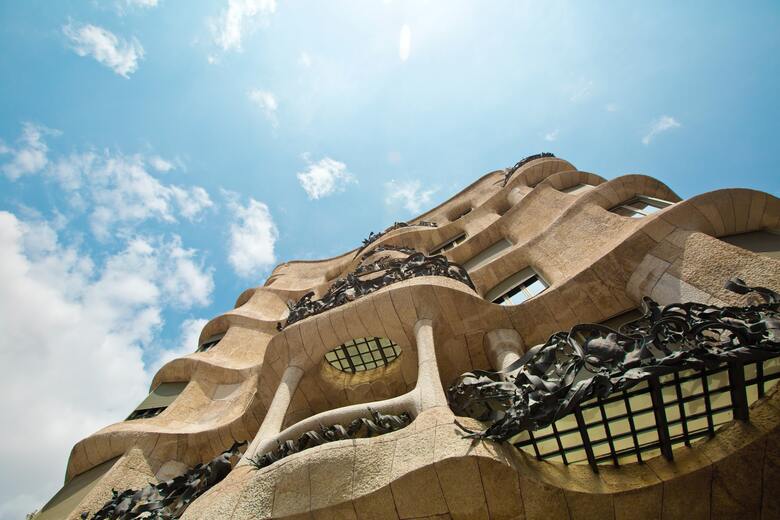
Barcelona was the home of the famous Antoni Gaudi. His earliest work in the city shows the true characteristics of the Art nouveau style. However, Gaudi used Art nouveau to create the unique and intricate style we nowadays call Modernism. His work can be found all over the city. Some examples are Casa Battlo, Parc Guell, Casa Mila… However, the crown jewel of course is the Sagrada Familia. This beautiful, yet unfinished, cathedral is just breath-taking.
Brussels (Belgium)

The first person to apply art nouveau to architecture was Victor Horta, who lived in Brussels. He was commissioned to design many public buildings all over the city and influenced many other architects to use the same style. Tucked away in a small street in Saint-Gilles. You can find the Victor Horta Museum, where you can learn all about the way Art nouveau developed in the city.
If you want to take a look behind the normally closed doors of these beautiful buildings; you can during the entire month of March! All the beautiful art nouveau (and art deco) building open their doors every weekend during the Banad festival. Or in other months do the ARAU tour or Art Nouveau walk that our Spotters recommend.
Budapest (Hungary)
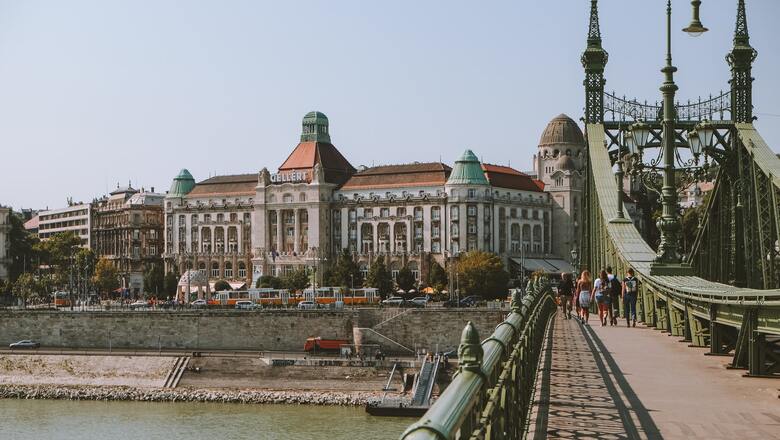
Art nouveau in Hungary was largely inspired by Hungarian and Transylvanian folklore and motifs. You can find art nouveau buildings all over Budapest but the most iconic one is without a doubt Gellert Baths. The complex houses a thermal spa featuring stained glass windows and intricate decoration. The bridge leading to the building is also a perfect example of Hungarian art nouveau.
Glasgow (Scotland)
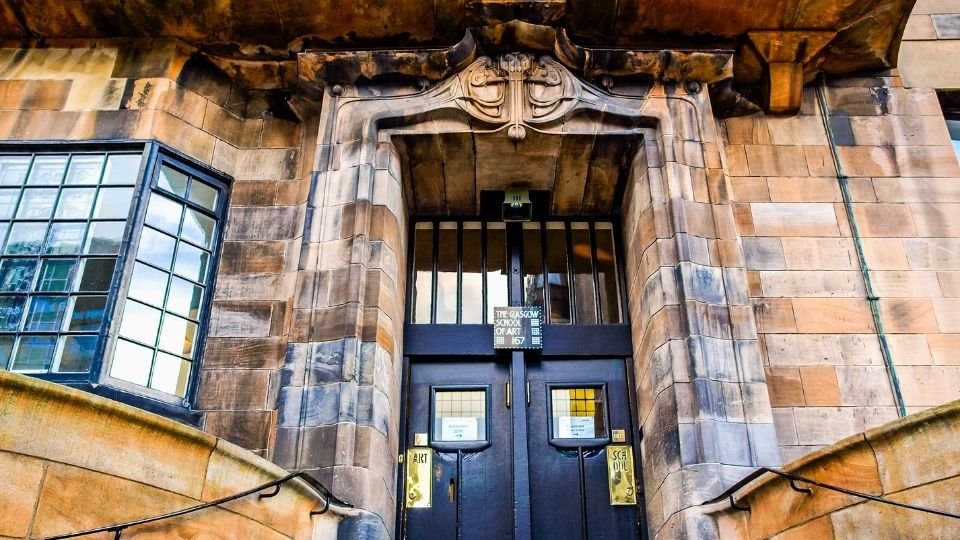
Most of the art nouveau buildings in Glasgow were designed by Charles Rennie Mackintosh. He created a new unique form of the popular style by combining different influences. He studies the Japanese style and combined it with the modernism coming from the European mainland. He mixed that together with true British craftmanship into the beautiful style that can be admired all throughout the city today. Some examples are the Mackintosh building, the willow tearooms, and the queen’s cross church.
Helsinki (Finland)
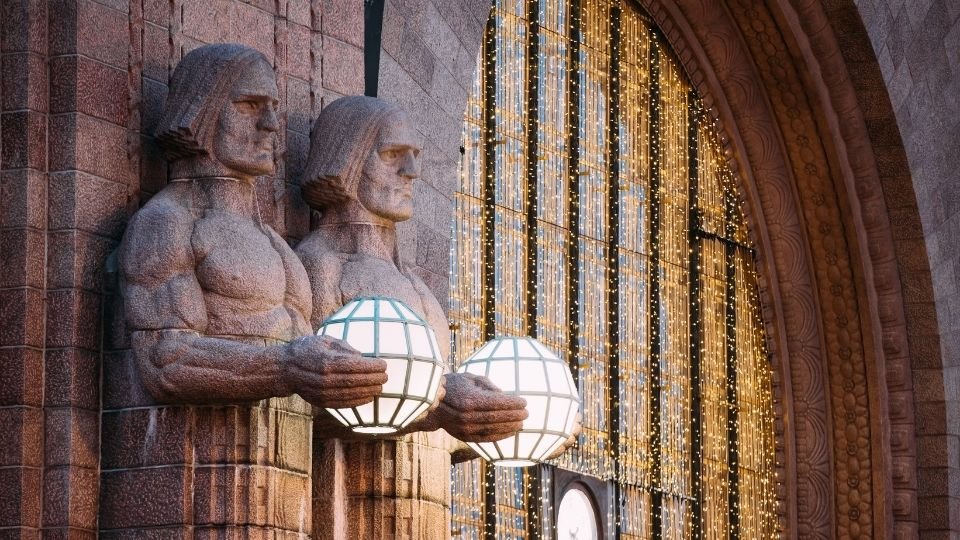
In Finland art nouveau is known as Jugend. The style is more restrained than in other parts of Europe but it’s still Art nouveau. The style is used in both private and public buildings scattered all over Helsinki. The most famous building is the central station with arched glass windows and beautiful sculptures known as the ball guys.
Oradea (Romania)

This beautiful city experienced an architectural boom in the 19th century. It often got called Little Paris. Most of the art nouveau buildings in Oradea can be found around the Unirii square in the center of the city. It’s a lesser-known city so you can explore without too many other people around.
Paris (France)

Paris was the epicenter for the art nouveau movement. Once the movement took off, it took over the city. When art nouveau was at its peak every Parisian designer or architect was designing in art nouveau. It was everywhere! Sadly many buildings were destroyed when the movement lost popularity. You can still admire the iconic art nouveau arches above metro stations. You’ll also find some breath-taking Guimard and Lavirotte buildings including the Castel Beranger, Hotel Mezzara, and Hotel Guimard, the Lavirotte building, and many others.
Prague (Czech Republic)
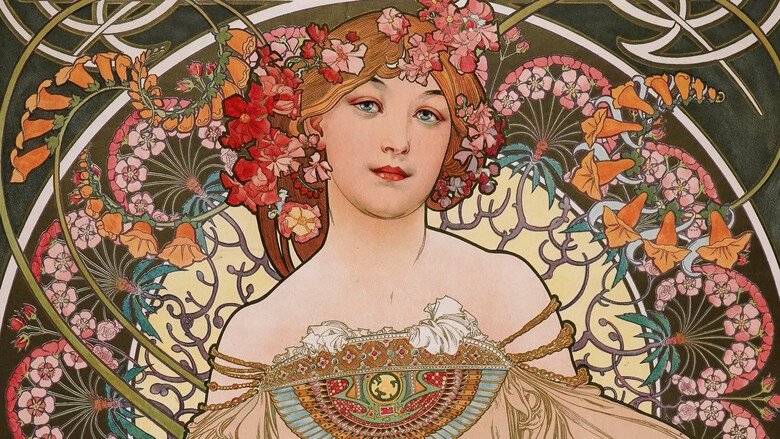
Alongside many beautiful art nouveau buildings in Prague, there’s the Municipal house and Fantova Kavárna at Prague’s central station, the city houses almost the full collection of Alfons Mucha’s work. Mucha created many beautiful posters that became immensely popular. He did most of his poster work in Paris but after his death, most of the work returned back to his home. Today you can admire these pieces in the Mucha museum.
Riga (Latvia)

According to the UNESCO world heritage list, Riga has the most Art Nouveau architecture in one city! During the short time period where it was popular almost half of the buildings in Riga were built in the art nouveau style. When the movement lost popularity the Latvian people came up with their own version of the design: National Romanticism. They mixed the traditional Art nouveau style with their own traditional Latvian elements creating a unique new look.
Saint Petersburg (Russia)
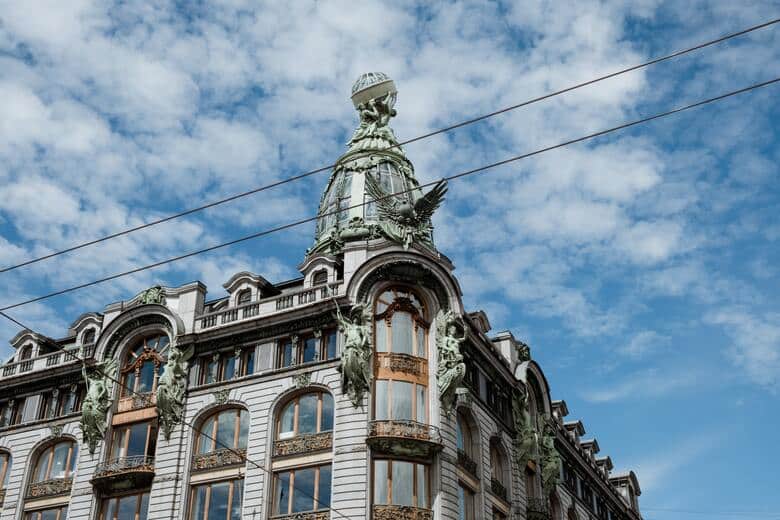
In Russia, Art nouveau was known as Stil models or The world of Arts. Russian Art nouveau drew inspiration not from nature but from its own folklore. Architects used bright and clashing colors and the style grew rapidly in popularity. Hundreds of buildings in Saint Petersburg were built in this style all over the city and almost none of them were destroyed! The most famous building is the Singer house with its glass tower and arched façade. You can even find art nouveau public toilets!
Subotica (Serbia)

Subotica, a small sleeping town on the border with Hungary is a true hidden gem when it comes to art nouveau. The small city developed mostly during the art nouveau style period which means most of the buildings were build in art nouveau. This city is ideal if you want to admire art nouveau without the big crowds. The most beautiful building is the Raichle Palace. It truly looks like something from a fairytale! Townhall also houses a Mcdonald’s with the coolest art nouveau interior!
Turin (Italy)

In Italy, art nouveau is known as Stile Liberty, named after the Liberty shop in London. Stile liberty is unique as it combines the typical style elements from art nouveau with mythological figures and motifs. You’ll find it throughout Italy but Turin has most of it, especially the Cit Turin neighborhood. Start with a real Turin pastry here!
Vienna (Austria)

Many people associate Vienna with beautiful buildings. The art nouveau movement took its own form in Vienna. Artists such as Gustav Klimt, Otto Wagner, and Josef Hoffman led and shaped the Secession movement. The movement is easily identified by its golden dome. But alongside that, you’ll find many stations, bridges, and buildings in a more traditional Art nouveau style like the Majolika house.
